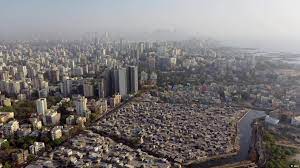
Urban Urbanization Connections
The process of concentrating people into cities, or urbanization, is a global phenomenon that is changing the face of human civilization. The swift expansion of megacities—urban areas with a population of more than ten million—has sparked serious questions about their sustainability and potential effects on the environment.
Megacities are hubs of innovation and economic activity, but they also have enormous challenges when it comes to resource management, pollution control, and maintaining the welfare of their citizens. In order to determine whether megacities can become more environmentally friendly, this essay examines the relationship between urbanization and sustainability.
The Ascent of Massive Cities:
Megacities have grown at an unprecedented rate in the twenty-first century, driven by a number of factors including demographic trends, economic opportunities, and rural-to-urban migration. Megacities such as Beijing, Tokyo, and New York have come to symbolize the dangers and opportunities of urbanization. The quick influx of people into these cities puts stress on the infrastructure, makes traffic worse, and raises the need for water, energy, and housing.
Megacities’ difficulties:
Achieving sustainability presents a multitude of challenges for megacities. Environmental degradation, which includes deforestation, water and air pollution, and biodiversity loss, is one of the most urgent problems. Megacities are concentrated areas of industrial activity and transportation networks, which increases greenhouse gas emissions and exacerbates climate change. Furthermore, the sheer volume of urbanization frequently results in waste disposal and resource management that is inefficient, which exacerbates environmental issues.
Megacities’ problems, nevertheless, also offer chances for creativity and sustainable growth. A growing number of companies, governments, and members of civil society are realizing that environmental issues must be addressed in tandem with the promotion of social justice and economic expansion.
Techniques for Sustainable Megacities:
Making the shift to eco-friendliness necessitates a multimodal strategy that incorporates behavioral modification, technological innovation, and urban planning. Megacities can implement various tactics to encourage sustainability:
- Sustainable Urban Planning: When it comes to creating walkable, green cities with ample public transportation, urban planners are essential. Compact, mixed-use developments minimize sprawl, encourage community engagement, and lessen reliance on automobiles.
- Adoption of Renewable Energy: Making the switch to renewable energy sources like hydropower, wind, and solar can help cut down on greenhouse gas emissions and lessen dependency on fossil fuels. Megacities can make infrastructure investments in renewable energy and provide incentives for energy-efficient behavior.
- Waste Management and Recycling: Resource conservation and landfill waste reduction can be achieved by putting in place complete waste management systems that include recycling initiatives and waste-to-energy plants.
- Green Infrastructure: Putting money into rain gardens, urban forests, and green roofs can reduce the impact of the urban heat island, improve air quality, and increase biodiversity.
- Sustainable Transportation: Increasing walking, bicycling, and public transportation lowers air pollution, greenhouse gas emissions, and traffic. Megacities can spend money on developing bike lanes, enlarging public transportation systems, and putting in place congestion pricing plans.
- Community Engagement and Education: Encouraging people to adopt eco-friendly practices and fostering a sustainable culture are two benefits of empowering communities through outreach and education programs.
Examining Cases in Sustainable Megacities:
Globally, a number of megacities have achieved notable progress in becoming more sustainable. For instance, Copenhagen, Denmark, is known for being one of the most bike-friendly and environmentally conscious cities in the world because of its investments in renewable energy and cycling infrastructure. Curitiba, Brazil, improved livability and environmental quality by implementing cutting-edge urban planning techniques, such as green spaces and bus rapid transit systems.
Possibilities for Sustainability:
Megacities offer opportunities for sustainability in spite of these obstacles. Their large populations and economies of scale foster inventiveness and the effective use of resources. Technological and infrastructure developments, for instance, can improve waste management techniques, encourage the use of renewable energy sources, and increase energy efficiency.
Smart city initiatives present promising avenues for minimizing environmental impact and optimizing resource allocation by integrating digital technologies and data-driven solutions.Furthermore, the concentration of various populations in megacities encourages social innovation, cultural exchange, and creativity—all crucial components of sustainable development.
Megacities have the power to influence social change and encourage sustainable lifestyles by utilizing the combined skills and knowledge of their citizens. Megacities can be made more sustainable through grassroots action, as shown by community-led projects like public transportation, green spaces, and urban agriculture.
Furthermore, megacities’ environmental impact can be lessened by the move toward sustainable urban planning and design. Compact development, mixed land use, and green infrastructure principles can increase urban biodiversity, encourage walkability, and lessen reliance on cars. In addition to raising the standard of living for locals, investments in bicycle infrastructure, pedestrian-friendly streets, and public transportation can increase mobility and lower greenhouse gas emissions.
Urbanization’s drawbacks:
The swift growth of megacities creates serious problems for sustainability. Degradation of the environment, which includes habitat destruction, deforestation, and pollution of the air and water, is one of the main problems. Urban areas have a concentration of vehicles and industries, which exacerbates climate change and puts residents’ health at risk due to poor air quality.
Furthermore, the need for land in megacities pushes people into natural habitats, endangering ecosystem services and biodiversity.The use of resources and the production of waste present another difficulty. Megacities rely on enormous energy, water, and raw material consumption to support their economies and populations.
However, these resources’ extraction and use result in greenhouse gas emissions and environmental degradation. Furthermore, the sheer amount of waste generated by megacities strains the capacity of the current waste management system, posing a risk to public health and pollution.
Moreover, marginalized communities frequently suffer the most from environmental degradation and limited access to basic services like clean water, sanitary conditions, and healthcare, which further exacerbates social inequality. Sustainable development is hampered by the uneven allocation of opportunities and resources among megacities, which also exacerbates social tensions and weakens social cohesion.
Best Practices and Case Studies:
Around the world, a number of megacities have started programs to encourage sustainability and lessen their negative effects on the environment. For instance, Copenhagen, Denmark, has set aggressive goals to achieve carbon neutrality by 2025, emphasizing energy efficiency, renewable energy, and environmentally friendly transportation. Urban sustainability is demonstrated by the city’s extensive cycling infrastructure, green spaces, and dedication to renewable energy.
Through innovative thinking and strategic planning, Singapore has become a global leader in urban sustainability despite its small land area. To lessen its impact on the environment, the city-state has made investments in public transit, green building practices, and water conservation. Furthermore, Singapore’s initiatives to incorporate nature into cities, like the Gardens by the Bay and rooftop gardens, demonstrate the possibility of conserving biodiversity in megacities.
Moreover, global megacities have access to platforms for cooperation and knowledge exchange through programs like the UN Sustainable Development Goals and the C40 Cities Climate Leadership Group. Megacities can tackle common challenges and expedite their shift towards sustainability by pooling their best practices, creative solutions, and lessons learned.
By: Muhamad Rizky FathurRahman Subekti
Write and Win: Participate in Creative writing Contest & International Essay Contest and win fabulous prizes.


